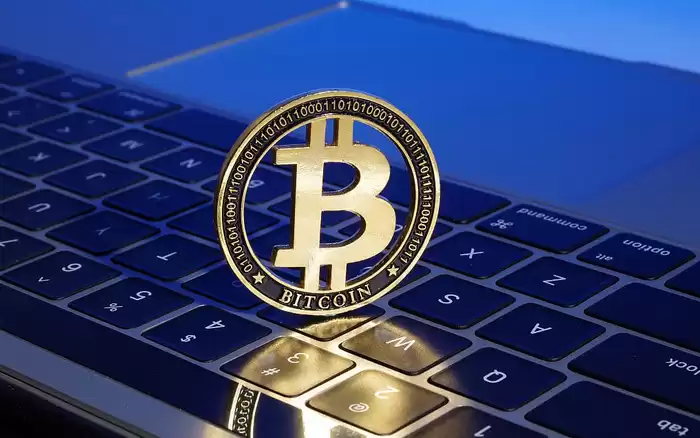-
 Bitcoin
Bitcoin $118400
0.47% -
 Ethereum
Ethereum $3836
2.20% -
 XRP
XRP $3.157
2.98% -
 Tether USDt
Tether USDt $0.9999
-0.03% -
 BNB
BNB $801.5
1.31% -
 Solana
Solana $180.9
2.07% -
 USDC
USDC $0.9999
-0.02% -
 Dogecoin
Dogecoin $0.2225
2.50% -
 TRON
TRON $0.3285
-1.02% -
 Cardano
Cardano $0.7789
2.60% -
 Hyperliquid
Hyperliquid $43.60
2.39% -
 Sui
Sui $3.892
4.41% -
 Stellar
Stellar $0.4229
3.34% -
 Chainlink
Chainlink $18.01
3.98% -
 Hedera
Hedera $0.2745
6.77% -
 Bitcoin Cash
Bitcoin Cash $582.3
3.38% -
 Avalanche
Avalanche $23.77
1.04% -
 Ethena USDe
Ethena USDe $1.001
0.01% -
 Toncoin
Toncoin $3.493
3.59% -
 Litecoin
Litecoin $110.0
2.48% -
 UNUS SED LEO
UNUS SED LEO $8.936
-0.37% -
 Shiba Inu
Shiba Inu $0.00001304
2.49% -
 Uniswap
Uniswap $9.999
1.09% -
 Polkadot
Polkadot $3.897
3.26% -
 Monero
Monero $308.6
-0.83% -
 Dai
Dai $0.9999
-0.01% -
 Bitget Token
Bitget Token $4.504
-0.04% -
 Pepe
Pepe $0.00001154
2.95% -
 Cronos
Cronos $0.1471
3.06% -
 Ethena
Ethena $0.6691
19.53%
What Is a Bitcoin Mining Pool?
Bitcoin mining pools, composed of miners pooling resources, elevate block discovery odds and ensure consistent payouts regardless of individual block findings.
Nov 13, 2024 at 02:40 pm

What Is a Bitcoin Mining Pool?
A Bitcoin mining pool is a group of miners who combine their resources to increase their chances of finding a block and earning the associated block reward. When a miner in a pool finds a block, the reward is shared among all the members of the pool, proportionally to the amount of work they contributed.
There are a number of benefits to joining a Bitcoin mining pool. First, it increases your chances of finding a block and earning the associated block reward. Second, it reduces the variance of your income, as you will receive a regular payout from the pool, regardless of whether or not you find a block yourself. Third, it gives you access to shared resources, such as mining software and hardware, which can help you to improve your mining efficiency.
How to Join a Bitcoin Mining Pool
There are a number of different Bitcoin mining pools to choose from. Each pool has its own rules and regulations, so it is important to do your research before joining a pool.
Once you have chosen a pool, you will need to create an account. You will also need to provide the pool with your Bitcoin address. Once you have created an account, you will be able to start mining with the pool.
How Bitcoin Mining Pools Work
Bitcoin mining pools work by using a process called "stratum." Stratum is a protocol that allows miners to communicate with the pool and submit their work.
When a miner joins a pool, they will be assigned a stratum server. The stratum server will send the miner a block template. The block template contains all of the information that the miner needs to find a block, such as the block header and the Merkle root.
The miner will then use their mining hardware to try to find a block that matches the block template. If the miner finds a block, they will submit it to the pool. The pool will then verify the block and, if it is valid, add it to the blockchain.
Benefits of Joining a Bitcoin Mining Pool
There are a number of benefits to joining a Bitcoin mining pool. These benefits include:
- Increased chances of finding a block and earning the associated block reward.
- Reduced variance of your income.
- Access to shared resources, such as mining software and hardware.
Risks of Joining a Bitcoin Mining Pool
There are also some risks associated with joining a Bitcoin mining pool. These risks include:
- The pool could be hacked and your Bitcoin could be stolen.
- The pool could go bankrupt and you could lose your investment.
- The pool could change its rules and regulations, which could adversely affect your earnings.
Overall, joining a Bitcoin mining pool can be a good way to increase your chances of finding a block and earning the associated block reward. However, it is important to do your research before joining a pool and to be aware of the risks involved.
Disclaimer:info@kdj.com
The information provided is not trading advice. kdj.com does not assume any responsibility for any investments made based on the information provided in this article. Cryptocurrencies are highly volatile and it is highly recommended that you invest with caution after thorough research!
If you believe that the content used on this website infringes your copyright, please contact us immediately (info@kdj.com) and we will delete it promptly.
- Pudgy Penguins Price Prediction: Buying Opportunity or Insider Dump?
- 2025-07-31 18:50:35
- Shrapnel, GalaChain, and China Gaming: A New Frontier
- 2025-07-31 19:10:35
- Dogecoin Howl: Bullish Signals and Analyst Bites – Is the Meme Coin Ready to Pounce?
- 2025-07-31 18:30:16
- Decoding Crypto Presales, Ethereum's Role, and Navigating a Tricky Altcoin Season
- 2025-07-31 18:30:16
- Bolivia, Crypto, and El Salvador: A Shifting Landscape
- 2025-07-31 18:50:35
- DAOs, Tokenomics, and Game Communities: Leveling Up the Game
- 2025-07-31 18:56:31
Related knowledge

What is Chainlink (LINK)?
Jul 22,2025 at 02:14am
Understanding Chainlink (LINK): The Decentralized Oracle NetworkChainlink is a decentralized oracle network designed to bridge the gap between blockch...

What is Avalanche (AVAX)?
Jul 22,2025 at 08:35am
What is Avalanche (AVAX)?Avalanche (AVAX) is a decentralized, open-source blockchain platform designed to support high-performance decentralized appli...

What is Polkadot (DOT)?
Jul 19,2025 at 06:35pm
Understanding the Basics of Polkadot (DOT)Polkadot (DOT) is a multi-chain network protocol designed to enable different blockchains to transfer messag...

What is Litecoin (LTC)?
Jul 23,2025 at 11:35am
Overview of Litecoin (LTC)Litecoin (LTC) is a peer-to-peer cryptocurrency that was created in 2011 by Charlie Lee, a former Google engineer. It is oft...

What is Monero (XMR)?
Jul 21,2025 at 10:07am
What is Monero (XMR)?Monero (XMR) is a decentralized cryptocurrency designed to provide enhanced privacy and anonymity for its users. Unlike Bitcoin a...

How to add indicators to Ethereum chart on TradingView?
Jul 19,2025 at 07:15am
What Is an Ethereum Chart on TradingView?The Ethereum chart on TradingView is a visual representation of the price movement of Ethereum (ETH) over a s...

What is Chainlink (LINK)?
Jul 22,2025 at 02:14am
Understanding Chainlink (LINK): The Decentralized Oracle NetworkChainlink is a decentralized oracle network designed to bridge the gap between blockch...

What is Avalanche (AVAX)?
Jul 22,2025 at 08:35am
What is Avalanche (AVAX)?Avalanche (AVAX) is a decentralized, open-source blockchain platform designed to support high-performance decentralized appli...

What is Polkadot (DOT)?
Jul 19,2025 at 06:35pm
Understanding the Basics of Polkadot (DOT)Polkadot (DOT) is a multi-chain network protocol designed to enable different blockchains to transfer messag...

What is Litecoin (LTC)?
Jul 23,2025 at 11:35am
Overview of Litecoin (LTC)Litecoin (LTC) is a peer-to-peer cryptocurrency that was created in 2011 by Charlie Lee, a former Google engineer. It is oft...

What is Monero (XMR)?
Jul 21,2025 at 10:07am
What is Monero (XMR)?Monero (XMR) is a decentralized cryptocurrency designed to provide enhanced privacy and anonymity for its users. Unlike Bitcoin a...

How to add indicators to Ethereum chart on TradingView?
Jul 19,2025 at 07:15am
What Is an Ethereum Chart on TradingView?The Ethereum chart on TradingView is a visual representation of the price movement of Ethereum (ETH) over a s...
See all articles

























































































